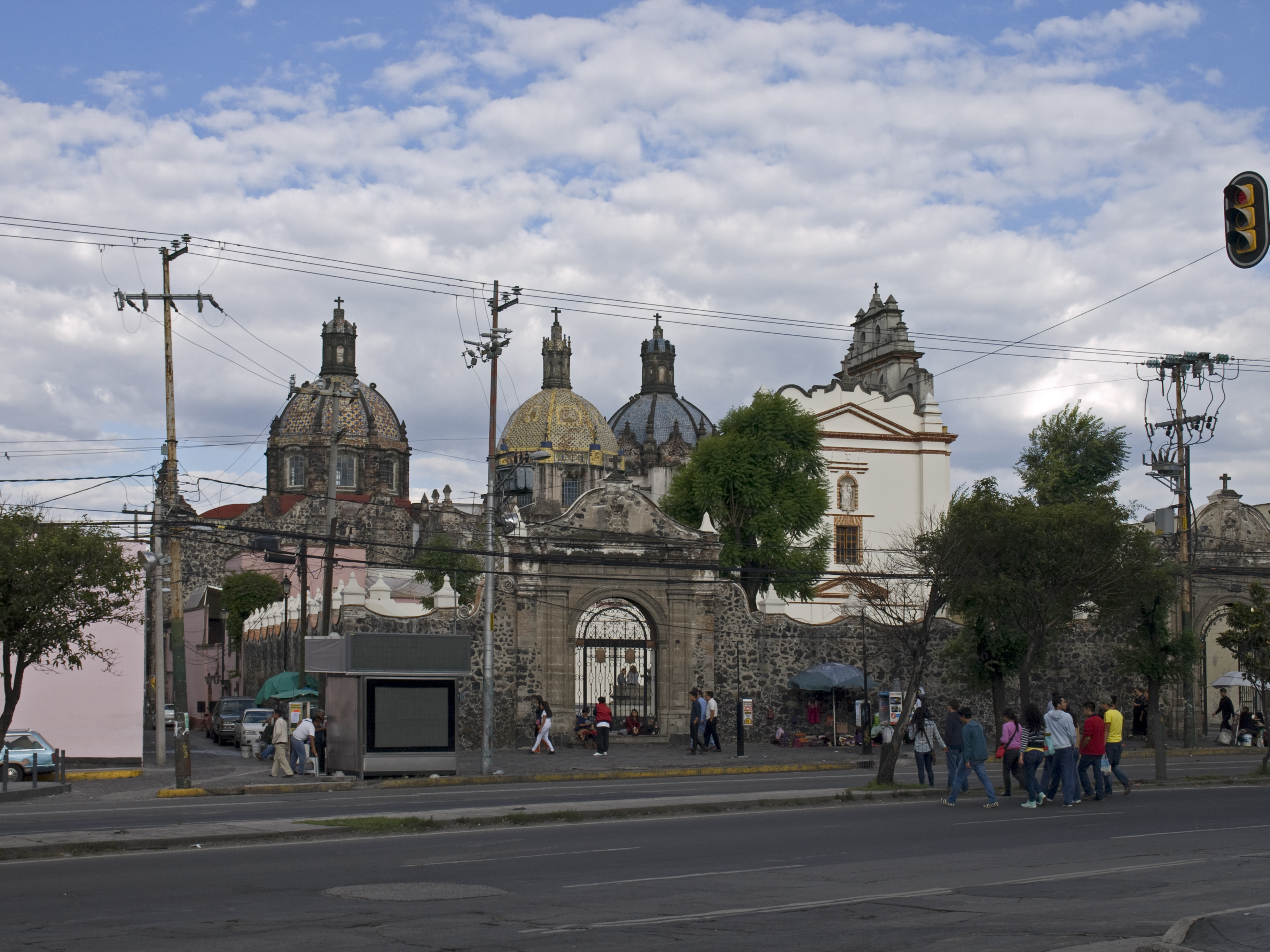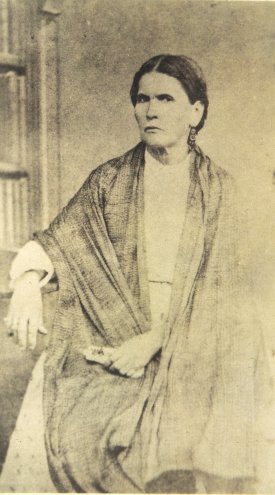|
San Ángel
San Ángel is a ''Colonia (Mexico), colonia'' (neighborhood) located in the southwest of Mexico City in Álvaro Obregón, Mexico City, Álvaro Obregón borough. Historically it was a rural community called Tenanitla in the pre-Hispanic period. Its current name is derived from the El Carmen monastery school called San Ángel Mártir. It remained a rural community centered on the monastery until the 19th and 20th centuries when the monastery closed and the area joined the urban sprawl of Mexico City. The area still contains many historic buildings, and El Carmen is one of the most visited museums in the city. Its annual flower fair, '' Feria de las Flores '', has been held since 1856. In 1934 San Ángel was declared a ''Pueblo Típico Pintoresco'' (Picturesque Typical Town); in 1987 it was declared a historical monument zone. Geography San Ángel is located in the southwest of the Federal District of Mexico along the southern end of Avenida Insurgentes, bordering the Ciudad Un ... [...More Info...] [...Related Items...] OR: [Wikipedia] [Google] [Baidu] |
Colonia (Mexico)
In List of cities in Mexico , Mexican urban geography, colonias () are neighborhoods. The name of the ''colonia'' must be specified when writing a postal address in Mexican cities. Usually ''colonias'' are assigned a specific postal code; nonetheless, in recent urban developments, gated community, gated communities are also defined as ''colonias'' and share the postal code of adjacent neighborhoods. Colonias do not have jurisdictional autonomy or representation. See also * Barrio * Barrios Mágicos * Colonias of Mexico City References Subdivisions of Mexico {{Mexico-geo-stub ... [...More Info...] [...Related Items...] OR: [Wikipedia] [Google] [Baidu] |
El Carmen Complex
El Carmen is a former convent converted to museum in San Ángel, a southern suburb of Mexico City. The convent was founded on 29 June 1615 by the Discalced Carmelites in the area of the Aztec village of Tenanitla, which was later renamed San Ángel. The founder was Father Andrés de San Miguel. This convent was built between 1615 and 1626. In the university, there was a college for theology students and a library, which contained more than 12,000 books. In 1858, the college was closed, and the complex was transferred to the local authorities. In 1929, the museum was created, and in 1939, it was transferred to the newly created Instituto Nacional de Antropología e Historia. The museum contains a large collection of Mexical colonial religious art including paintings of Miguel Cabrera José Miguel Cabrera Torres (born April 18, 1983), nicknamed Miggy, is a Venezuelan former professional baseball first baseman, third baseman, and designated hitter who played 21 seasons in Majo ... [...More Info...] [...Related Items...] OR: [Wikipedia] [Google] [Baidu] |
Fernández De Madrid
Fernández () is a Spanish patronymic surname meaning "son of Fernando" of Germanic origin. The Germanic name Ferdinand that it derives from ( Gothic: ''Frið-nanð'') means "brave traveler." The Portuguese version of this surname is Fernandes. The Arabized version is ''Ibn Faranda'' and it was used by the Mozarabs and Muwallads in Al-Andalus. Fernández was on the list of Officers and Sailors in the First Voyage of Columbus. The name is popular in Spanish speaking countries and former colonies. The Anglicization of this surname is Fernandez. It is worth noting that in countries such as Singapore, Malaysia and India, the similar-sounding Portuguese-origin surname Fernándes also shares the same Anglicized form Fernandez, resulting in overlaps between the two. People * Adrián Fernández (born 1965), Mexican race car driver * Adriana Fernández (born 1971), Mexican long-distance runner * Alberto Fernández (other) * Alejandro Fernández (other) * Alexand ... [...More Info...] [...Related Items...] OR: [Wikipedia] [Google] [Baidu] |
Adobe
Adobe (from arabic: الطوب Attub ; ) is a building material made from earth and organic materials. is Spanish for mudbrick. In some English-speaking regions of Spanish heritage, such as the Southwestern United States, the term is used to refer to any kind of earthen construction, or various architectural styles like Pueblo Revival or Territorial Revival. Most adobe buildings are similar in appearance to cob and rammed earth buildings. Adobe is among the earliest building materials, and is used throughout the world. Adobe architecture has been dated to before 5,100 BP. Description Adobe bricks are rectangular prisms small enough that they can quickly air dry individually without cracking. They can be subsequently assembled, with the application of adobe mud to bond the individual bricks into a structure. There is no standard size, with substantial variations over the years and in different regions. In some areas a popular size measured weighing about ; in other ... [...More Info...] [...Related Items...] OR: [Wikipedia] [Google] [Baidu] |
Porfirio Díaz
José de la Cruz Porfirio Díaz Mori (; ; 15 September 1830 – 2 July 1915) was a General (Mexico), Mexican general and politician who was the dictator of Mexico from 1876 until Mexican Revolution, his overthrow in 1911 seizing power in a Plan of Tuxtepec, military coup. He served on three separate occasions as President of Mexico, a total of over 30 years, this period is known as the Porfiriato and has been called a ''de facto'' dictatorship. Díaz’s time in office is the longest of any Mexican ruler. Díaz was born to a Oaxacan family of modest means. He initially studied to become a priest but eventually switched his studies to law, and among his mentors was the future President of Mexico, Benito Juárez. Díaz increasingly became active in Liberal Party (Mexico), Liberal Party politics fighting with the Liberals to overthrow Antonio López de Santa Anna, Santa Anna in the Plan of Ayutla, and also fighting on their side against the Conservative Party (Mexico), Conservative ... [...More Info...] [...Related Items...] OR: [Wikipedia] [Google] [Baidu] |
Alonso Núñez De Haro Y Peralta
Dr. Alonso Núñez de Haro y Peralta (October 31, 1729 – May 26, 1800) was archbishop of Mexico from September 12, 1772, to May 26, 1800, and viceroy of New Spain from May 8, 1787, to August 16, 1787. Origins and education Núñez de Haro was born in the diocese of Cuenca, Spain, probably on October 31, 1729, although some sources give the date as November 1. He began his studies at the University of Toledo, then received his doctorate from the University of Bologna. Thereafter he became professor at the University of Ávila. He was also a canon in Segovia and Toledo. Studious and intelligent, he learned Latin, Greek, Hebrew, French and Italian. In 1771 he was named archbishop of Mexico. Archbishop of Mexico As archbishop, he converted the Jesuit ''colegio'' of Tepotzotlán into the Seminario de Instrucción, Retiro Voluntario y Corrección, a combined site of instruction for priests, retirement home, and jail for ecclesiastics, since with ecclesiastical privileges ('' ... [...More Info...] [...Related Items...] OR: [Wikipedia] [Google] [Baidu] |
Museo Nacional De Las Culturas
The Museo Nacional de las Culturas (MNC; ''National Museum of Cultures'') is a national museum in Mexico City dedicated to education about the world's cultures, both past and present. It is housed in a colonial-era building that used to be the mint (coin), mint for making coins. Prior to this, the site was the home of the location of the Casa Denegrida de Moctezuma, Moctezuma's Black House. The mint was moved to Apartado Street in 1850, and the building was used for various purposes until it was converted to its current use in 1966. Aztec site The museum is located on the site of the original Aztec building that was a part of Moctezuma II, Moctezuma's "New Palaces" complex called the "Casa Denegrida" (Black House) by Invasion, Spanish invaders, who described it as a windowless room painted in black. In here, Moctezuma would meditate on what he was told by professional Clairvoyance, seers and shamans. During the Mexican–American War, Invasion, this Black House, along with the re ... [...More Info...] [...Related Items...] OR: [Wikipedia] [Google] [Baidu] |
Francisco Fagoaga
Francisco is the Spanish and Portuguese form of the masculine given name ''Franciscus''. Meaning of the name Francisco In Spanish, people with the name Francisco are sometimes nicknamed "Paco". San Francisco de Asís was known as ''Pater Communitatis'' (father of the community) when he founded the Franciscan order, and "Paco" is a short form of ''Pater Communitatis''. In areas of Spain where Basque is spoken, "Patxi" is the most common nickname; in the Catalan areas, "Cesc" (short for Francesc) is often used. In Spanish Latin America and in the Philippines, people with the name Francisco are frequently called "Pancho". " Kiko"and "Cisco" is also used as a nickname, and "Chicho" is another possibility. In Portuguese, people named Francisco are commonly nicknamed " Chico" (''shíco''). People with the given name * Pope Francis (1936-2025) is rendered in the Spanish, Portuguese and Filipino languages as Papa Francisco * Francisco Acebal (1866–1933), Spanish writer and author ... [...More Info...] [...Related Items...] OR: [Wikipedia] [Google] [Baidu] |
Plaza Del Carmen
Plaza del Carmen Mall is a two-story enclosed shopping mall in Caguas, Puerto Rico. It is currently anchored by an Outlet China; a discount store, a Grand Way; a department store, and an Advance Auto Parts. It is also home to a Farmacias Caridad; a pharmacy. It was formerly also anchored by a Fallas Discount Stores which closed in 2020, the space remaining vacant. History Early development Plans for the construction of Plaza del Carmen began in 1960, but the development was halted until 1973 by the Planning Board and the Department of Commerce who considered that a center of its size in the Caguas area was not warranted by then. In 1973, under the development of Turabo Shopping Center, Inc., plans for the construction of the commercial complex of $12 million were approved, with plans of a two level, approximately 232,000 square feet of retail space designed by architect Carlos Sanz to lease to commercial businesses. Opening and success: 1970s-1980s In November 1975, CO ... [...More Info...] [...Related Items...] OR: [Wikipedia] [Google] [Baidu] |
Instituto Nacional De Antropología E Historia
The Instituto Nacional de Antropología e Historia (INAH, ''National Institute of Anthropology and History'') is a Federal government of the United Mexican States, Mexican federal government bureau established in 1939 to guarantee the research, preservation, protection, and promotion of the prehistoric, Archaeology, archaeological, Anthropology, anthropological, History, historical, and Paleontology, paleontological heritage of Mexico. Its creation has played a key role in preserving the Culture of Mexico, Mexican cultural heritage. Its current national headquarters are housed in the Palace of the Marqués del Apartado. INAH and the Instituto Nacional de Bellas Artes y Literatura (INBAL) are tasked with cataloging and protecting monuments and buildings regarded as cultural patrimony. INAH is entrusted with 'archaeological' (pre-Hispanic and paleontological) and 'historical' (post-Conquest 16th to 19th centuries) structures, zones and remnants, while INBAL is entrusted with 'ar ... [...More Info...] [...Related Items...] OR: [Wikipedia] [Google] [Baidu] |
Spain
Spain, or the Kingdom of Spain, is a country in Southern Europe, Southern and Western Europe with territories in North Africa. Featuring the Punta de Tarifa, southernmost point of continental Europe, it is the largest country in Southern Europe and the fourth-most populous European Union member state. Spanning across the majority of the Iberian Peninsula, its territory also includes the Canary Islands, in the Eastern Atlantic Ocean, the Balearic Islands, in the Western Mediterranean Sea, and the Autonomous communities of Spain#Autonomous cities, autonomous cities of Ceuta and Melilla, in mainland Africa. Peninsular Spain is bordered to the north by France, Andorra, and the Bay of Biscay; to the east and south by the Mediterranean Sea and Gibraltar; and to the west by Portugal and the Atlantic Ocean. Spain's capital and List of largest cities in Spain, largest city is Madrid, and other major List of metropolitan areas in Spain, urban areas include Barcelona, Valencia, Seville, ... [...More Info...] [...Related Items...] OR: [Wikipedia] [Google] [Baidu] |


